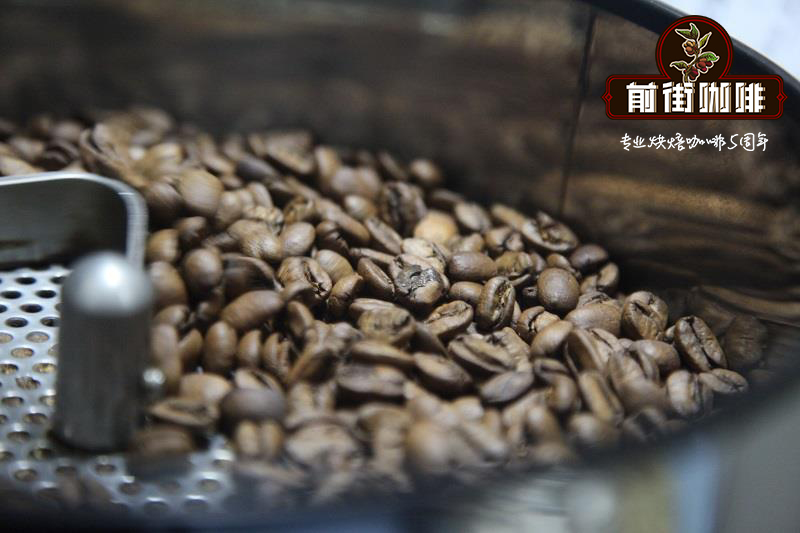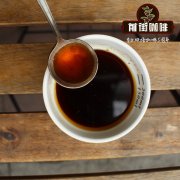The roasting process of coffee is explained in detail. How does the roasting stage affect the flavor of coffee?

Roasting is one of the most attractive parts of the coffee industry. Raw coffee beans are almost tasteless and have an unpleasant vegetable taste, but roasted raw beans are transformed into incredibly fragrant, complex and varied ripe beans. That is, we usually come into contact with, whether it is the purchase of coffee bean bags, or in the coffee shop to taste delicious coffee, are roasted delicious.
Baking stage and Flavor effect
In short, the roasting of coffee actually refers to how deep the final color of the coffee bean is (light roasting to deep roasting) and how long it takes (fast or slow). Different roasting speed will affect the performance of different flavors. When roasting coffee, many reactions will reduce weight and lose moisture. Slow frying (finished in 14-20 minutes) will have a high weight loss ratio (about 16-18%), while quick-frying can be completed in 90 seconds. For an expensive cup of high-quality coffee, slow stir-frying will lead to better flavor development.
In the roasting process, there are three important factors that determine the final flavor of coffee: sour, bitter and sweet. In general, the longer the total baking time, the less acidity is left. On the contrary, the bitterness increases with the baking time. The development of sweetness is curved, between the peak of sour and bitter taste, and a good baker knows how to make a coffee bean reach the highest sweetness in every degree of roasting. But whether you use a baking method that makes it sour and sweet, it may not help if you use shoddy coffee beans, even though the roasting method is adjusted to more advanced levels.

The first stage: removing moisture.
Coffee beans contain 711% moisture, which is evenly distributed in the tight structure of the whole coffee bean. when there is more water, the coffee beans will not turn brown. after pouring the raw coffee beans into the bean dryer, it takes some time for the coffee beans to absorb enough heat to evaporate the excess moisture, so this stage requires a lot of heat.
The second stage: turning yellow
After the excess water is brought out of the coffee beans, the first stage of browning begins. At this stage, the structure of the coffee beans is still very tight and has a similar aroma like Indian rice and toast. Soon, the coffee beans will expand, the silver skin on the surface begins to fall off, and the exhaust device of the bean dryer is discharged into the silver skin collection bucket. The first two stages are very important. If the moisture of the raw coffee beans is not properly removed, the subsequent baking stage will not be able to achieve uniform baking, even if the coffee beans look fine on the outside, but they may not be ripe on the inside. the flavor after brewing is very unpleasant, leaving the bitter taste on the surface of the coffee beans and the undeveloped sharp sour and grass taste of the bean core. After this stage, it is difficult to save even if you slow down the baking speed, because different parts of the same bean will develop at different rates.
The third stage: the first explosion
When browning starts to accelerate, large amounts of gas (mostly carbon dioxide) and water vapor begin to be produced in the coffee beans. when the internal pressure increases too much, the coffee beans begin to burst, make a crisp sound, and expand nearly twice as much. It was then that the flavor of coffee beans as we know it developed, and the baker could decide when to end the roasting of coffee beans.
The fourth stage: flavor development stage
After the first explosion, the surface of the coffee beans will look smoother, but there will still be a few wrinkles, which determines the final color depth of the coffee and the actual depth of roasting. The baker must grasp the sour, bitter and sweet taste of the final cooked bean product. The longer the baking time, the higher the bitter taste.

Stage 5: the second explosion
At this stage, the coffee beans burst again, but the sound is subtle and dense. Once the coffee beans are roasted to the second explosion, the internal oil is easily brought to the bean surface, and most of the sour taste will fade and produce another new flavor, which is often called "baking flavor". This flavor does not vary according to the type of beans, because it is caused by carbonization or coking rather than internal flavor components. However, it is dangerous to bake coffee beans in the second explosion stage.
Sugars and acids in coffee beans
Coffee beans contain a certain degree of monosaccharides, although not all sugars are sweet, but these monosaccharides are usually sweet and can easily react under the catalysis of coffee baking temperature. once most of the water in the coffee bean evaporates, the sugar will begin to react differently with the heat, some of which will play a caramelization effect, causing some coffee beans to have caramel-like tonality, especially The sweetness of these caramelized sugars will decrease and may eventually become one of the sources of bitterness.
There are many kinds of sour taste in the coffee beans, some of which taste pleasing and some of which are not delicious. For bean bakers, one of the most important acids is chlorogenic acid. when baking coffee, one of the key goals is to completely remove untasty acids while avoiding creating more negative flavor factors and retaining the most delicious aromaticity.
Important Notice :
前街咖啡 FrontStreet Coffee has moved to new addredd:
FrontStreet Coffee Address: 315,Donghua East Road,GuangZhou
Tel:020 38364473
- Prev

What is espresso? What do countries think of espresso? How's the espresso?
What is espresso? Some people use the term to describe concentrated drinks, while others associate it with high caffeine content or darker roasting. There are many different definitions of espresso around the world. Therefore, it is important that cafe owners, baristas and bakers understand what people might want when asking for strengths. In order to learn more about the whole
- Next

What do you mean, boutique coffee? what are the standards? What are the aspects of good boutique coffee?
Nowadays, many cafes have come up with the concept of freshly ground fine coffee. Compared with the coffee brewed with coffee powder, the freshly ground boutique coffee is indeed more fragrant and mellow. But is hand-made coffee a real boutique coffee? Not exactly! Of course, the taste and aroma of coffee are important factors in considering fine coffee.
Related
- Beginners will see the "Coffee pull flower" guide!
- What is the difference between ice blog purified milk and ordinary milk coffee?
- Why is the Philippines the largest producer of crops in Liberia?
- For coffee extraction, should the fine powder be retained?
- How does extracted espresso fill pressed powder? How much strength does it take to press the powder?
- How to make jasmine cold extract coffee? Is the jasmine + latte good?
- Will this little toy really make the coffee taste better? How does Lily Drip affect coffee extraction?
- Will the action of slapping the filter cup also affect coffee extraction?
- What's the difference between powder-to-water ratio and powder-to-liquid ratio?
- What is the Ethiopian local species? What does it have to do with Heirloom native species?

